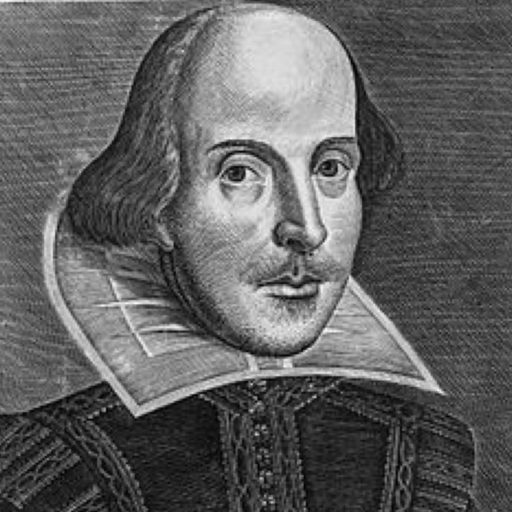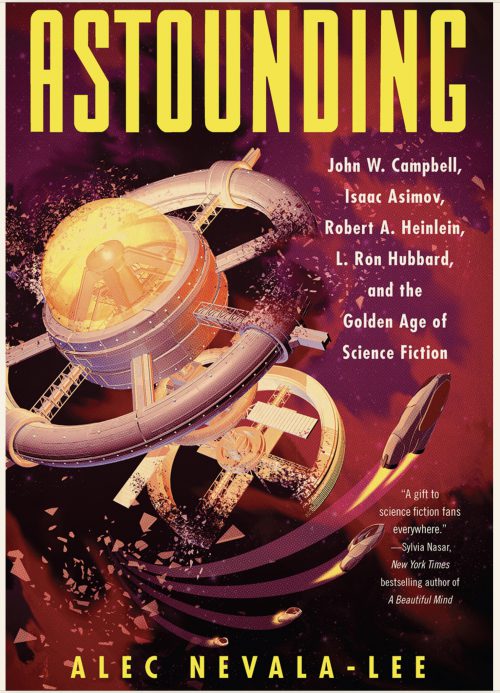Astounding Tales
Remember the original CSI, Las Vegas? In an early online discussion about the show’s taxonomy, that series was classified as science fiction — owing to the make-believe technology used to solve crimes. As Arlo Guthrie would sing? “Dog smelling prints.”
The lineage for something like Star Trek is clear. The concept starts with ideas. Considering CSI and its procedural derivatives as science fiction seems like a stretch, at first, but follow the logic, the rapid results done with science and scientific equipment using scientific method falls squarely in the realm of science fiction.
What wasn’t clear, at first, is whether or not the book was an academic treatment of the founding fathers of modern SF, or if it was casual survey, with the author part of the story.
For me, I read I about the book online, hat-tip to the book-list listserv. Then, I bought the book as a digital only copy, starting to read it on an i-Tablet.
I have to wonder, where is my flying car?
The original source of this material is firmly rooted in the pulps, so named for the pulpy, splintered paper upon which the stories were printed. Due to a relatively high acid content, the paper itself — historical publications now — would fall apart. Still, it speaks to an era when literary content was better valued.
Two authors with roots firmly in the pulps? Big part of my formative education, and part of what makes me who and what I am.
“In 1963, Asimov argued that science fiction appealed to an existing type of curious reader, but today, it seems more likely to subtly alter the way in which we all think and feel.” Page 23.
Certain stories did change the way I think and feel, and some of those, treated like a myth, give me hope for a future, no matter how dystopian it might appear.
Astounding Tales
Therein hangs this tale, with the history of the magazine Weird Tales woven in with these threads.
The book makes an effort to separate myths about the various authors, and their pasts, with substantiating evidence, partially debunking some of L. Ron Hubbard’s creation myth.
As my family motto should read?
“We never let the facts interfere…”
(Hi Mom!)
Why a bio like mine is amusing. The only fiction was inserted by an old editor. Leave well enough alone?
The book isn’t exactly fiction, but it does offer a surprising source of survey covering the old pulps. Previously, and I did get in an electronic shouting match with an author about this, but the original source for science fiction was the old Westerns, again, pulp magazine stories where a loner on horse and with a six-shooter would tame injustice, and get the girl. Yes, that’s a sexist term, but the material was frankly quite sexist.
The space opera stories and serials were borne out of those economic roots, changing a six-shooter for a ray gun, and a horse for a rocket ship. Not much changed, but at one point, and my biggest academic influence, that one professor suggested that science fiction was literature of ideas, whereas the other realms were too limited.
Bit of a bias, but as someone who grew up Heinlein’s YA stories, I learned about the idea of the importance of self-reliance, from that very genre of literature. Exciting, as young person, the books were filled ideas, and an egalitarian notion of that science could save us all. Plus do the right thing. So not all lessons worked.
Eating a late lunch with one of my politically inept, but otherwise very enlightened — old Austin — redneck buddies? As the elder statesman in his extended family, he held that each of his kids then grandkids got a copy of Stranger in a Strange Land, at a certain point in life.
Intellectually and emotionally, astrologically, I belong to a gap generation. I didn’t see the pulps or the Heinlein juveniles on their first pass. “Late to the rodeo,” as we might say. But RAH’s Stranger in a Strange Land straddles those generational boundaries. While an anecdote I read before? The first and last chapter of Stranger was spawned in that early cauldron of creative juices.
Astounding Tales
Then there is the great scientific mind, Isaac Asimov, and from 1937ish? He proclaimed the Scientology guy, L. Ron Hubbard, the best writer.
Antecedent to Comic Con?
Passing reading notes.
Part way through, two of the players seemed to be imbued with the spirit that science fiction was more than pulp literature, and it could change lives. To read the story and history of books that were formative in my own life, years later? They hit their target.
Again, a serious sidebar? Near two dozen years back, I realized I had a perfect testing environment to work with whatever harebrained theory was currently in vogue. I used my weekly column as my own, personal Petri Dish to test material. What works. What doesn’t work. What feels truest. I read many of the authors noted in the text, and seems they worked along the same lines.
Stories behind the stories.
- My Heinlein Book shelf — paperbacks.
Inside those pictured paperbacks, there were a number of the stories originally mentioned in as Street & Smith, or John W. Campbell era publication, only reprinted as a mass market material, at a much later date. As the discourse in the book continues, with some sort of narrative trail, there’s always a link back to my own material, and when I suggest this was formative literature, I’m sure I didn’t understand the significance of rebellion, or military duty, but I do recall, RAH had an ideal that all humans should live up to, about being able to work a quadratic equation, or fire a weapon and skin an animal for food. Plus, perhaps, appreciate great art. In one respect, the true liberal arts education.
Another notion, in passing, the authors tended to be quite liberal, or — at least — egalitarian, but fiercely patriotic. Socialist, communist, but America, USA, first.
SHAPFU, Hopelessly And Permanently — never read that one before.
Astounding Tales
There’s a long portion of the history dedicated to the roots of the now infamous Scientology, with an exploration of the roots of that — such a divisive topic? So far, there’s an attempt to see how L. Ron Hubbard came up with the idea, and how that worked out. Of interest, to me, at one point OTO was in the orbit of the foundation. Founders never met, but L. Ron Hubbard did — apparently — talk, text, or otherwise correspond with Aleister Crowley.
There was a pull quote from Crowley’s Liber 0, about heuristic, empirical evidence. Part of the basis for what eventually became Scientology. Understanding the background by exploring what the authors and cohorts were all doing, with access to some of the correspondence from that era? Helps to see how it became what it is.
“Hubbard wrote to O’Brien…
I await your reaction on the religion angle. . . . . We’re treating the present time beingness, psychotherapy treats the past and the brain. And brother, that’s religion, not mental science.” Page 349.
Interesting, because it is the foundations of modern, call it what one will.
Astounding Tales
“Upon further investigation, Campbell convinced himself that Dean had invented a reactionless space drive—a device that could fly without throwing away fuel as a propellant.” Page 813.
Eerily reminiscent of the canon of Space Opera by A. Bertram Chandler. There was some pseudo-science mentioned that fulfills the drive Chandler used to spin his space opera.
Other notations, Vonnegut’s Mother Night, I first read in my first Saturn oppose Saturn (adolescence) —
“In his novel Mother Night, Kurt Vonnegut, Jr., told the haunting story of an American secret agent posing as a Nazi propagandist, concluding, “We are what we pretend to be, so we must be careful about what we pretend to be.” And he gave the character a name that must have resonated with many readers: Howard W. Campbell, Jr.” page 732.
John W. Campbell, he’s the thread that runs consistently throughout the tales, and even though his death is three-quarters through, his influence is felt, even to this day.
Astounding Tales
So the book’s cover image suggests it’s about Campbell, the legendary pulp editor, Heinlein, the legendary SF author, and Hubbard, the legendary Scientology figure. Asimov, the prolific writer. Him, too. And it is, but in passing, especially in the last third of the book, there is a roster of authors, many of whom I’ve read in the formative decades, circa, plus or minus, paperbacks from 1970 through 1990.
While not an exhaustive study, in part, it does track the influence and depth of material that started in the pulps.
Astounding Tales
Extremely satisfying, as it really isn’t Lit Crit, but it is does survey the topic and presents it all in a very readable fashion.
Reading the book, though, brought up memories, and an interesting intersection, for me, as it was an early professor who taught me write — take notes — while I was reading a book. “All literature should be interactive.” In spirit, if not in word.
But the list of authors who followed the big three, originally of John W. Campbell’s stable, all borne of that era’s influence? I know those names. I’ve read their books. All of that was formative foundation material.
Part trip down the twisting corridors of my own mind, but also a well-pieced and paced book about the influence and confluence of pop culture and technology.


4 Trackbacks and Pingbacks